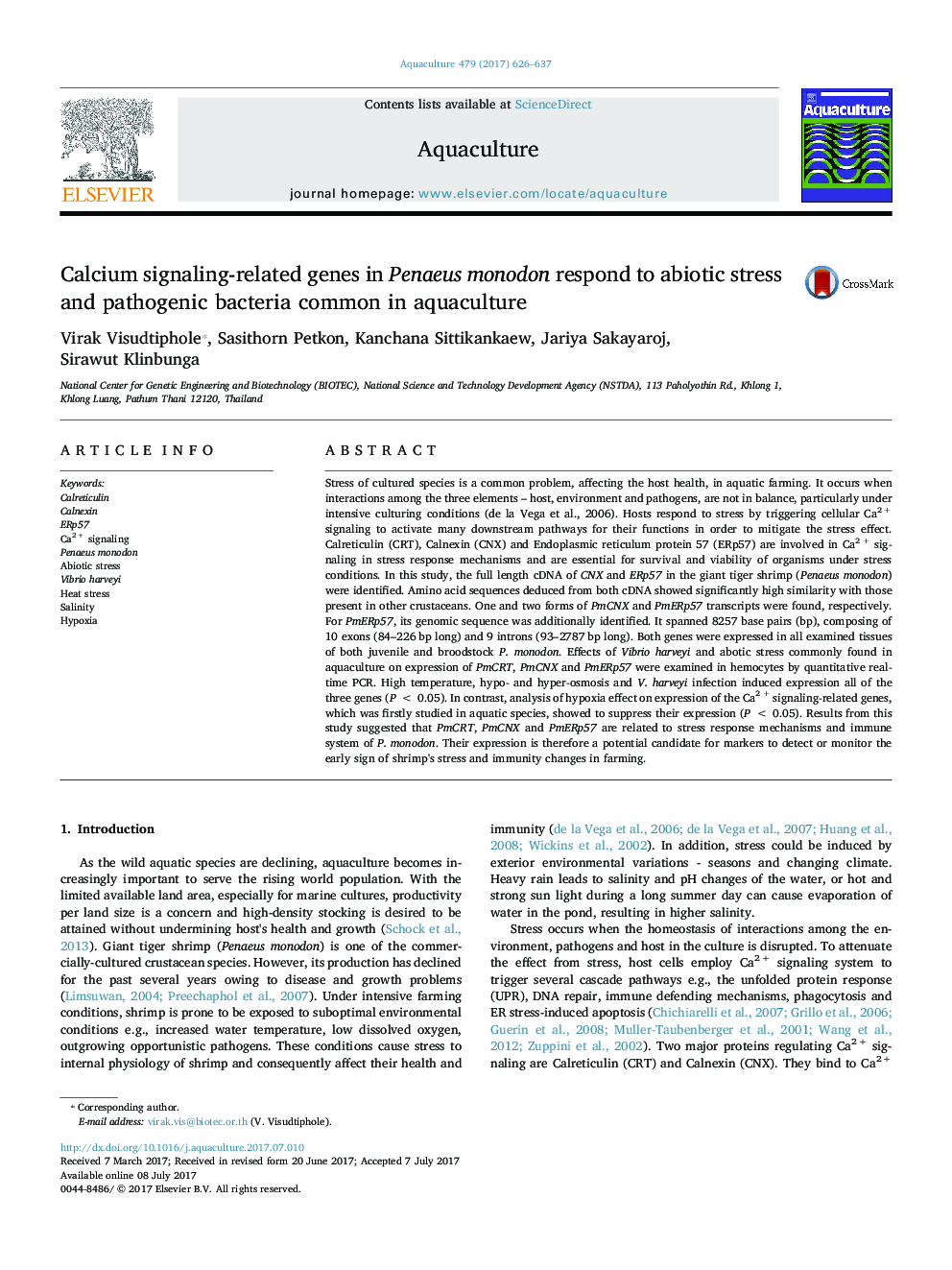| Article ID | Journal | Published Year | Pages | File Type |
|---|---|---|---|---|
| 5539220 | Aquaculture | 2017 | 12 Pages |
Abstract
Stress of cultured species is a common problem, affecting the host health, in aquatic farming. It occurs when interactions among the three elements - host, environment and pathogens, are not in balance, particularly under intensive culturing conditions (de la Vega et al., 2006). Hosts respond to stress by triggering cellular Ca2Â + signaling to activate many downstream pathways for their functions in order to mitigate the stress effect. Calreticulin (CRT), Calnexin (CNX) and Endoplasmic reticulum protein 57 (ERp57) are involved in Ca2Â + signaling in stress response mechanisms and are essential for survival and viability of organisms under stress conditions. In this study, the full length cDNA of CNX and ERp57 in the giant tiger shrimp (Penaeus monodon) were identified. Amino acid sequences deduced from both cDNA showed significantly high similarity with those present in other crustaceans. One and two forms of PmCNX and PmERp57 transcripts were found, respectively. For PmERp57, its genomic sequence was additionally identified. It spanned 8257 base pairs (bp), composing of 10 exons (84-226Â bp long) and 9 introns (93-2787Â bp long). Both genes were expressed in all examined tissues of both juvenile and broodstock P. monodon. Effects of Vibrio harveyi and abotic stress commonly found in aquaculture on expression of PmCRT, PmCNX and PmERp57 were examined in hemocytes by quantitative real-time PCR. High temperature, hypo- and hyper-osmosis and V. harveyi infection induced expression all of the three genes (PÂ <Â 0.05). In contrast, analysis of hypoxia effect on expression of the Ca2Â + signaling-related genes, which was firstly studied in aquatic species, showed to suppress their expression (PÂ <Â 0.05). Results from this study suggested that PmCRT, PmCNX and PmERp57 are related to stress response mechanisms and immune system of P. monodon. Their expression is therefore a potential candidate for markers to detect or monitor the early sign of shrimp's stress and immunity changes in farming.
Keywords
Related Topics
Life Sciences
Agricultural and Biological Sciences
Aquatic Science
Authors
Virak Visudtiphole, Sasithorn Petkon, Kanchana Sittikankaew, Jariya Sakayaroj, Sirawut Klinbunga,
